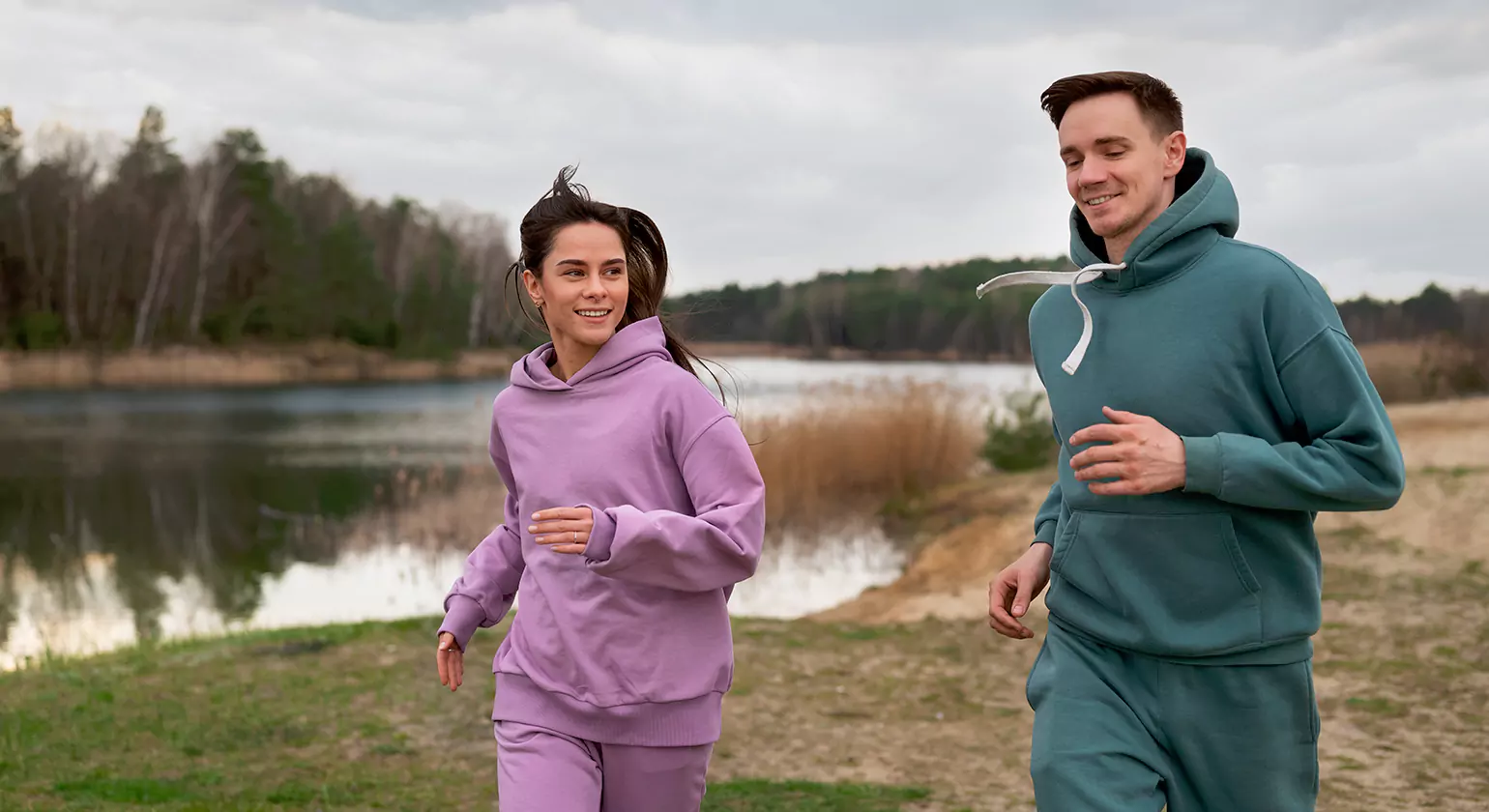Table of Contents
Introduction
Couples therapy activities have become a popular method for improving relationships, helping couples foster connection, enhance communication, and resolve conflicts. Whether you’ve been in a relationship for years or are newly committed, understanding and practicing relationship exercises can bring you closer. But, you might wonder: what are couples therapy activities, and how can they benefit your relationship? In this blog post, we’ll dive into the essential activities that can transform your partnership, addressing the most common relationship struggles and providing actionable steps to overcome them.
Understanding Couples Therapy Activities

What Are Couples Therapy Activities?
Couples therapy activities are structured exercises that help couples improve their communication, emotional intimacy, conflict resolution, and overall connection. These exercises can be facilitated by a therapist or practiced independently, either at home or during therapy sessions. They are designed to address key relationship dynamics, such as trust, respect, and understanding.
The Science Behind Relationship Exercises
Scientific studies have shown that structured activities can improve communication and reduce relationship distress. Activities that promote active listening, empathy, and emotional sharing encourage couples to better understand each other’s perspectives, resulting in healthier dynamics. Exercises often focus on the emotional and psychological aspects of relationships, helping partners develop a deeper bond.
Common Goals - Connection, Communication, and Conflict Resolution
At the heart of couples therapy activities is the goal to strengthen connection and improve communication. Conflict resolution is another crucial element, as many couples face challenges when it comes to navigating disagreements. By practicing these activities, couples can work through these issues more effectively, resulting in stronger, more resilient partnerships.
Core Communication Activities for Couples

Why Communication Skills Matter in Relationships
Effective communication is one of the most vital components of any healthy relationship. It’s essential for expressing needs, understanding each other’s feelings, and resolving conflicts in a way that strengthens the partnership rather than weakening it. Couples therapy activities help partners develop these skills and learn how to communicate with respect and clarity. Following are a few core communication activities for couples to strengthen their bond.
Active Listening & Validation
One of the foundational activities in couples therapy is active listening. This involves listening attentively without interrupting, reflecting back on what you’ve heard, and showing empathy. Validation goes hand in hand with active listening and involves acknowledging your partner’s feelings without judgment.
How to Practice Uninterrupted Active Listening
To practice active listening, set aside distractions, maintain eye contact, and focus solely on your partner’s words. After they speak, reflect on their message by summarizing it in your own words, showing them that their thoughts and feelings are heard and understood.
Validation vs. Agreement - Understanding the Difference
It’s important to recognize that validation doesn’t necessarily mean agreeing with your partner. Instead, it’s about acknowledging their emotions as valid, regardless of whether you share the same perspective. This distinction can help avoid unnecessary arguments and foster a more supportive environment for open dialogue.
Positive Language and “I” Statements
When addressing sensitive topics, use positive language and “I” statements instead of placing blame. For example, instead of saying “You never listen to me,” try saying “I feel unheard when I’m not given your full attention.” This approach helps prevent defensiveness and encourages more productive conversations.
Reframing Criticism into Constructive Feedback
When offering feedback, focus on constructive criticism rather than negative comments. This involves expressing your concerns in a way that promotes growth and solutions rather than pointing out flaws. For instance, instead of saying “You never help with the chores,” try “I would appreciate it if you could help more around the house.”
Using “I Feel ____ When ____” Templates
A simple but powerful exercise involves using the template “I feel ____ when ____.” This allows you to express your emotions clearly and without blame, such as “I feel frustrated when we don’t communicate during the week.”
Mirroring and Reflective Listening
Mirroring and reflective listening help partners confirm their understanding of each other. When your partner speaks, repeat what they’ve said in your own words. This exercise can strengthen communication by ensuring that both partners are on the same page and feel heard.
The Power of Being Heard
The feeling of being heard is deeply powerful in relationships. This activity teaches couples how to truly listen and validate their partner’s emotions, which significantly contributes to emotional intimacy and trust.
Nonverbal Connection
Nonverbal communication plays a huge role in relationships. The Extended Eye Contact Exercise encourages couples to make eye contact for an extended period, which can help build a deeper emotional connection.
Reading and Responding to Nonverbal Cues
Another key communication skill is recognizing and responding to nonverbal cues. This includes understanding body language, facial expressions, and other subtle signals. This exercise helps partners attune to each other’s emotional states, improving empathy and responsiveness.
Building Emotional Intimacy and Trust

Expressing Gratitude and Appreciation
Expressing gratitude regularly is essential for fostering trust and emotional intimacy. Couples who practice daily gratitude rituals tend to experience greater satisfaction in their relationships. This might include complimenting your partner, acknowledging their efforts, or simply saying “thank you” for their love and support.
Daily Gratitude Rituals for Couples
You can incorporate gratitude into your daily routine by sharing one thing you’re grateful for about your partner each day. This practice reinforces positive emotions and strengthens the bond between you and your partner.
Reminiscing and Shared Memories
Nostalgia can be a powerful tool for rekindling connections. Spend time reminiscing about your favorite moments together, whether it’s your first date, a vacation, or an inside joke. This can help you reconnect emotionally and create new memories to cherish.
Vulnerability and Safe Conversations
Vulnerability is crucial for building emotional intimacy. Creating a judgment-free zone where both partners feel safe to express their thoughts and feelings without fear of criticism fosters a deeper emotional connection.
Attachment Styles and Relationship Patterns
Understanding your attachment style can help you navigate relationship dynamics. Couples therapy activities often explore how attachment styles influence communication, intimacy, and conflict resolution, allowing partners to understand each other’s emotional needs better.
Conflict Resolution and Problem-Solving Exercises

Sandwich Method for Difficult Conversations
The Sandwich Method is a conflict-resolution technique that involves presenting criticism between two positive comments. This method helps soften the impact of criticism, making it easier for the partner to hear and respond constructively.
Structuring Feedback with Positivity
Feedback is essential for growth, but it’s important to structure it positively. Start by acknowledging your partner’s strengths before gently offering areas for improvement. This technique minimizes defensiveness and promotes openness to change.
40-20-40 and Time-Limited Discussions
The 40-20-40 rule suggests allocating 40% of the time for one partner to speak, 20% for the other to respond, and the remaining 40% for reflection. This ensures that both partners have an equal opportunity to express their thoughts and feelings during difficult discussions.
Fair Sharing and Constructive Dialogue
In any disagreement, fair sharing ensures both partners are equally heard. This includes listening attentively and responding thoughtfully, rather than interrupting or dominating the conversation.
Behavior Change Requests
Instead of demanding changes, request specific behaviors in a respectful and measurable manner. For example, instead of saying, “You never help with the cleaning,” try saying, “Can you clean the kitchen every Tuesday evening?”
Fun and Creative Couples Therapy Activities

Lend Me a Hand - Cooperative Problem-Solving
The Lend Me a Hand activity is a creative way to engage in cooperative problem-solving with your partner. By tackling challenges together, you strengthen your ability to work as a team. This activity involves setting a challenge or task that requires both partners’ input and effort to complete. Whether it’s solving a puzzle, planning a project, or even learning a new skill together, the key is cooperation. This exercise helps couples better understand each other’s strengths and weaknesses, leading to improved teamwork and problem-solving dynamics in the relationship.
Working Together on Shared Tasks
Collaborating on shared tasks—whether it’s household chores, planning a vacation, or tackling financial decisions—can bring couples closer. Working Together is a couples therapy activity that focuses on joint effort and mutual support. When partners share responsibilities and work towards common goals, it enhances their sense of partnership and cooperation. Couples often find satisfaction in completing tasks together, as it can lead to a sense of accomplishment and reinforce the connection between them.
Prediction Method - Understanding Assumptions
The Prediction Method exercise encourages couples to predict each other’s responses to various situations or questions. This game helps highlight differences in assumptions and perceptions, offering a deeper understanding of each other’s thought processes. By discussing why you predicted a certain outcome and comparing it with reality, you can uncover hidden assumptions and learn to better appreciate your partner’s point of view. This activity is particularly useful for improving empathy and reducing misunderstandings.
Exploring How You See Each Other
Exploring How You See Each Other involves partners sharing their thoughts on how they perceive one another. This could include how each partner sees the other’s personality traits, strengths, or even quirks. It’s a fun and lighthearted way to encourage deeper self-reflection and open conversation. By understanding how your partner sees you, you may learn about areas of the relationship that need attention, as well as positive qualities you may not have recognized in yourself.
Three and Three Lists
The Three and Three Lists exercise involves each partner making a list of three things they appreciate about the other and three things they would like to see more of in the relationship. Afterward, both partners share their lists with each other. This exercise fosters open communication about needs and expectations while encouraging gratitude and recognition of positive traits. It’s a simple yet effective way to strengthen emotional intimacy and ensure both partners feel valued.
Sharing What You Love (and Don’t Love) in a Safe Way
Being able to express what you love and don’t love about your relationship in a safe, non-judgmental space is essential for growth. The Sharing What You Love (and Don’t Love) activity involves expressing your feelings honestly while focusing on your own emotions rather than blaming your partner. For example, you might say, “I love when we go on spontaneous adventures,” or “I feel frustrated when we don’t communicate about our schedules.” By framing feedback constructively and openly, you create space for both partners to share their feelings without causing harm to the relationship.
Date Night and Playful Reconnection Ideas
Sometimes, relationships need a little spark. Date Night and Playful Reconnection Ideas offer an opportunity to reignite fun and romance in the relationship. These activities encourage couples to take a break from their routine and try something new or playful. From cooking a meal together to visiting a new restaurant or going on a surprise adventure, keeping date nights fresh and exciting can create lasting memories and strengthen the emotional connection. Incorporating laughter and spontaneity into your relationship is crucial for maintaining a sense of excitement and closeness.
Injecting Fun Back Into Your Relationship
Relationships can sometimes fall into predictable routines, leading to emotional stagnation. One way to counter this is by intentionally injecting fun back into your relationship through couples therapy activities. Engaging in playful activities, having lighthearted conversations, and finding joy in the simple moments can keep the relationship feeling fresh. Whether it’s playing games, participating in a new hobby together, or having fun conversations without distractions, prioritizing fun in your relationship ensures that both partners feel appreciated and connected.
Daily and Weekly Check-In Rituals

The Power of Regular Check-Ins
Regular check-ins provide an opportunity for couples to stay connected and address any concerns before they grow into larger issues. A check-in ritual can be as simple as asking each other how your day was, how you’re feeling emotionally, or if any areas of the relationship need attention. This practice encourages open communication and helps prevent misunderstandings. By dedicating time to check in with each other regularly, couples can stay aligned in their goals, feelings, and overall relationship health.
Sample Questions for Meaningful Conversations
To ensure your check-ins are meaningful, consider using questions that invite deeper reflection. Some examples include:
- “What is one thing I did today that made you feel loved?”
- “What are you feeling right now, and how can I support you?”
- “Is there something I can do to make you feel more appreciated?”
- “How can we improve our communication this week?”
- “Is there anything you’ve been holding onto that you’d like to talk about?”
These questions promote vulnerability, emotional connection, and understanding, helping both partners stay in tune with each other’s needs.
Setting Relationship Goals Together
Setting goals as a couple is an essential part of building a strong, future-focused relationship. Couples therapy activities like setting relationship goals together allow partners to identify common objectives and work toward them as a team. These goals could be related to finances, health, family life, or even personal growth. By aligning your goals and tracking progress together, you reinforce your shared commitment and build a sense of teamwork that enhances your connection.
Aligning on Shared Values and Priorities
In any relationship, it’s essential to be aligned on core values and priorities. Aligning on Shared Values and Priorities involves discussing what’s most important to both partners in life, whether it’s career aspirations, family planning, or personal beliefs. This exercise helps ensure that both partners are moving in the same direction and are on the same page about the big picture. When couples understand and support each other’s values, they can avoid potential conflicts and create a stronger bond built on mutual respect and understanding.
Couples Therapy Worksheets and Tools

Printable Worksheets for At-Home Use
Therapists often use worksheets to guide couples through various activities and discussions. These worksheets can be incredibly helpful for couples to work through complex topics in a structured and productive manner. Printable worksheets offer exercises for improving communication, resolving conflicts, and building emotional intimacy. You can find these resources online or request them from your therapist to use as part of your couples therapy journey.
Journaling Prompts for Deeper Insight
Journaling is a great way for individuals and couples to reflect on their feelings and experiences. Journaling prompts help couples dive deeper into their emotions, allowing them to explore aspects of the relationship that may not have been addressed before. Sample prompts might include:
- “What is one thing I wish my partner understood better about me?”
- “What do I love most about our relationship?”
- “How can we improve our emotional connection?”
Online Resources and Apps for Couples
In today’s digital age, there are many online resources and apps available to help couples maintain a healthy relationship. These tools offer relationship tips, exercises, communication guides, and even therapy sessions through apps like Couples Therapy and Lasting. Many of these apps provide structured programs designed to strengthen communication, trust, and intimacy, allowing couples to engage in self-guided therapy or enhance their sessions with a therapist.
Special Topics and Advanced Approaches

Gottman Method Couples Therapy Exercises
The Gottman Method is one of the most well-known and research-backed therapeutic approaches for couples. Developed by Dr. John Gottman, it focuses on improving communication, conflict resolution, and emotional connection. Couples therapy exercises from the Gottman Method include exercises like the Love Map and the Four Horsemen. These couples therapy activities help couples understand each other’s worlds, improve emotional intimacy, and break negative cycles of interaction.
Emotion-Focused Couples Therapy Techniques
Emotion-Focused Therapy (EFT) emphasizes the importance of emotions in relationships and helps couples express their feelings in a safe and constructive way. Techniques from EFT involve recognizing emotional patterns, addressing underlying needs, and working together to resolve emotional blocks. These techniques are particularly useful for couples dealing with emotional disconnection or unresolved trauma.
Building Empathy and Emotional Safety
Building empathy is a critical part of any relationship, particularly in times of conflict. Exercises that focus on empathy allow couples to better understand each other’s feelings and experiences. Creating emotional safety involves fostering an environment where both partners feel secure in sharing their emotions without fear of judgment or rejection.
The Five Love Languages: Using Them in Daily Life
Gary Chapman’s Five Love Languages offers a framework for understanding how people express and receive love. These include:
- Words of Affirmation
- Acts of Service
- Receiving Gifts
- Quality Time
- Physical Touch
Understanding each other’s love languages can drastically improve communication and connection by ensuring that both partners feel loved in ways that resonate with them.
Identifying and Honoring Each Other’s Needs
An essential aspect of any relationship is the ability to identify and respect each other’s needs. Exercises that focus on identifying and honoring each other’s needs can be extremely helpful for couples who struggle with feeling misunderstood or neglected. By understanding and meeting each other’s emotional, physical, and psychological needs, couples can build a more fulfilling and supportive relationship.
Conclusion
Couples therapy activities offer valuable tools for strengthening relationships, improving communication, and fostering deeper emotional connections. By incorporating these exercises into your relationship, you create an opportunity for growth, healing, and a more resilient bond. Remember, consistency is key, and regularly practicing these activities will lead to lasting change. If you feel your relationship could benefit from professional help, don’t hesitate to seek guidance from a licensed therapist. Lakes Counseling offers online therapy for couples, providing accessible support to strengthen your relationship from the comfort of your home. By nurturing your relationship, you can create a partnership that thrives through both challenges and triumphs.
FAQ’s
What If My Partner Is Hesitant to Try These Activities?
Start by discussing the benefits of couples therapy activities and how they can strengthen the relationship. Encourage your partner to try them gradually, respecting their comfort zone. Patience and understanding can help ease their hesitation and foster a positive attitude toward engaging in these activities.
Can These Exercises Replace Professional Therapy?
While couples therapy activities can significantly improve communication and connection, they are not a substitute for professional therapy. If you’re facing deep-seated issues, a licensed therapist can provide tailored guidance to address more complex concerns. These exercises complement therapy rather than replace it.
How Often Should We Practice Couples Therapy Activities?
Consistency is important, but the frequency depends on your relationship needs. Start with weekly sessions, and as the activities become routine, you can adjust the frequency. Regular practice strengthens your connection, but ensure you’re both comfortable with the pace to avoid overwhelm.
What If We Argue During an Exercise?
It’s normal to have disagreements, even during therapy activities. If arguments arise, take a break and return to the activity when you’re both calm. Focus on maintaining respect and using communication strategies like “I feel” statements to prevent escalation and foster understanding.
Are There Activities for Long-Distance Couples?
Yes, many couples therapy activities can be adapted for long-distance couples, such as communication exercises, emotional check-ins, and trust-building activities. Virtual tools like video calls, shared journals, and collaborative apps can facilitate these exercises and help maintain emotional intimacy despite the physical distance.
Best Communication Exercises For Married Couples?
Effective exercises include active listening, reflective listening, and using “I” statements to foster understanding and respect.
How To Reconnect With Your Partner Emotionally?
Start with regular emotional check-ins, expressing vulnerability, and engaging in shared activities to rebuild emotional intimacy.
Couples Therapy Activities For Trust Issues?
Trust-building activities include honest conversations, vulnerability exercises, and commitment rituals to reinforce reliability and openness.
Fun Couples Therapy Exercises To Do At Home?
Try games like “Lend Me a Hand,” memory-sharing activities, or collaborative problem-solving tasks that encourage teamwork and connection.
How To Improve Intimacy In A Long-Term Relationship?
Improve intimacy through regular emotional check-ins, physical touch, expressing gratitude, and engaging in shared hobbies or adventures.
What Are The Most Effective Couples Therapy Techniques?
Popular techniques include the Gottman Method, Emotionally Focused Therapy (EFT), and communication exercises like active listening and positive reinforcement.
Can Couples Therapy Activities Help Prevent Divorce?
Yes, regular couples therapy activities can help improve communication, reduce conflict, and strengthen emotional bonds, all of which can prevent divorce when practiced consistently.



